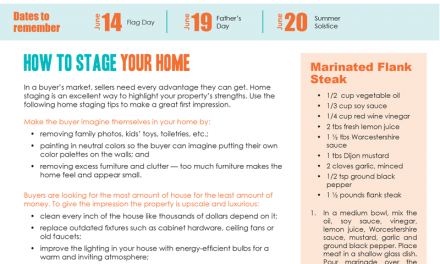In this article, you will learn the nature of a balance sheet for a discussion with your homeowner clients about their assets and debts.
Underwater property: the family’s black-hole asset
The 2008 recession wiped out trillions of dollars of home asset wealth across the nation. However, few states experienced the severe rise and fall of prices in the real estate market as acutely as California. It’s part of history replicating itself in the Golden State.
As we head into the 2023 recession, which has already hit our property market, home values are plummeting from their mid-2022 peak. Further, 5% of the nation’s mortgaged homeowners who purchased in 2022 are already underwater, financially locked into houses that are black-hole assets going into 2023. Another 19% of 2022’s mortgaged purchasers have less than 10% equity, nearly the amount consumed by transactional costs on a sale.
Further, the share of negative and near negative equity homeowners is certainly higher here in California, where home values have plunged at a more precipitous rate than the nation as a whole.
Looking back for a look forward shows us the potential path home values will take, and the homeowners who purchased at peak-time prices — 2020, 2021 and 2022 — maybe even 2019.
Now that home prices are falling back toward their historical values, each month of continued ownership for those who purchased within the past three or four years sucks up exponential sums of family income compared to what the home will rent for — its economic value to the homeowner-occupant, called implicit rent.
This occurred in the decade following the 2006 peak in home values and is fully expected to ripple through ownership in the 2023-2025 period. History repeats itself – again.
Negative equity owners as a class
Two breeds of negative equity homeowners exist:
- those who are fully aware of their financial plight and have tried to get relief but cannot; and
- those who aren’t aware or are in willful disbelief of their precarious financial footing.
As the 2008 recession hit set in, home prices took a steep dive. What emerged was a significant portion of California homeowners who found themselves imprisoned in their homes, stuck paying on dead-end mortgages years after they purchased. These mortgages, while amortized, contributed nothing to building up equity in the owner’s home. Nearly one million California homeowners defaulted, but many more stayed, emotionally hitched to their black-hole assets.
In 2023, the share of underwater homes has begun to rise — not in price, but in the amount of weight placed on the housing market. Further, as prices continue on a reverse course heading into the next economic recession likely to formally arrive in the third quarter of 2023, the pernicious presence of negative equity will become inescapably more common.
For a compelling insight into an individual household’s equity position, take a look at a balance sheet. As a worksheet, the homeowner lists in dollar amounts all the homeowner’s assets and liabilities — debts. The balance sheet is the tool which deciphers a homeowner’s financial status at a given time.
The use of the balance sheet, also called a statement of financial position, is a simple, clear-voiced exercise in financial planning. The entries are like those in the homeowner’s application for their home mortgage. For the greatest understanding of debt, the analysis needs to be conducted by every household (and investor and businessperson) at the end of each year.
Preparation of a balance sheet is especially instructive to families who purchased or refinanced during the rapid price escalation from mid-2020 to mid-2022, since they are most likely to be underwater or will soon reach that status.
Further, the primary bulk of a homeowner’s assets and debt is typically singularly comprised of their home. [See RPI Form 209-3]
In contrast, a profit and loss (P&L) worksheet is a separate but tandem financial statement serving a different purpose. It is the basis for a critical budgetary review of the homeowner’s monthly income and expenditures. [See RPI Form 209-2]
A P&L does not deal with the value of the home — an asset — or the mortgage debt — a liability — but lists the homeowner’s monthly ebb and flow of cash, consisting of:
- personal income;
- monthly expenses; and
- ongoing obligations, including mortgage payments.
By completing a balance sheet, a homeowner can develop a firm mental grasp on the family’s accumulated wealth. In turn, prudent long-term financial decisions can be made. A balance sheet is about gold bricks in the basement, not budgeting for family expenditures.
Family wealth planning: using a balance sheet
The balance sheet approach to setting a homeowner’s net worth is an acute, meaningful exercise for everyone involved. Since conditions in the real estate market are known to an agent, on their review of a client’s balance sheet they are better able to advise on the client’s ownership alternatives.
This financial statement informs individuals about their progress for building wealth through the ownership of real estate as either a store of wealth, as with their home or undeveloped land, or an investment in income property or property for use in their business. Investors and families accounting for the dollar amount of the annual increase in the value of their assets usually do so during the first days of each year — often at the same time they prepare their annual income tax return.
The analysis reveals whether the family is on track to meet long-term financial goals, or whether the family is insolvent and in need of a change in behavior or assets.
The balance sheet also helps the family rationally determine which assets to keep and best spend their earnings and efforts on — and which assets need to be discarded as nonproductive or worse, a drain on cash.
Recall that a balance sheet distinguishes the relationship between two basic financial categories:
- assets; and
- liabilities.
Assets are tangible and intangible items of value held by the homeowner. They are listed on a balance sheet at their full market value, not at a figure representing the net equity in the asset.
Among the items are liquid assets. These take the form of cash and holdings easily converted to cash, such as money accumulated in a savings account and tradable stocks and bonds. [See RPI Form 209-3 §1 and 2]
Most often, the largest dollar-valued asset a homeowner will ever own is their home — a decision nearly always made with an agent’s skilled advice. But it is historically classified as an illiquid asset since the equity in a home cannot quickly be converted to cash.
With a positive equity stake in a home, the owner treats it as a valued asset and thus maintains and improves it. Its value is a greater amount than the mortgage debt.
Over time, the equity buildup in a property — achieved through mortgage principal reduction, asset inflation and demographic appreciation in value — can be cashed-out by either further financing or sale, both time consuming and expensive processes.
Other items make up a homeowner’s assets, such as funds held in retirement accounts, ownership interests in businesses and trust deed notes. Vehicles and equipment owned are also assets, as well as furniture, electronic equipment and any other item of recognized value, such as collectibles. [See RPI Form 209-3 §5 through 9]
Liabilities are the flip side of the financial coin.
Liabilities included in a balance sheet are financial obligations and debts owed to others, including:
- real estate mortgages;
- auto mortgages;
- credit card balances;
- charge accounts;
- one year’s amount of alimony/child support/lease payments; and
- loans collateralized by stocks, bonds or notes. [See RPI Form 209-311 through 15]
By subtracting the total dollar of liabilities from the total market value of all assets, the resulting sum is the family’s net worth (or negative worth). The formula is:
Assets minus liabilities equals net worth.
Related article:
Pandemic-era buying spree plunges homebuyers from minority groups underwater
Dear, 2023 shrunk our net worth…
A homeowner’s net worth is revealed when their total liabilities are subtracted from the current dollar value of their assets.
Personal net worth is a primary determinant of the financial well-being all individuals need to know about themselves. When net worth is positive, the homeowner is worth more than the debts they owe to their creditors — voilà, the homeowner is solvent.
However, this balancing act is immediately upended when a high-value asset encumbered with debt, such as the homeowner’s mortgaged residence, loses market value and produces a negative equity.
When the negative equity is large enough, the net worth of the homeowner’s other assets on their balance sheet is inverted and overwhelmed. The homeowner’s total net worth appears as a negative dollar figure. Instead of a positive measure of wealth, negative net worth is a measure of financial insolvency.
When insolvent — more dollar debts than dollar assets — the homeowner is a candidate for bankruptcy protection. It is in this context that the agent reviews the pros and cons of the homeowner continuing to own and occupy the property.
Editor’s note — This corrosive net worth phenomena driven by negative equity property was particularly rampant and damaging for those in the Baby Boomer generation who live in inland suburban areas. They have fewer years remaining in the workforce to recover, and pricing in the periphery to the coastal areas has not yet fully recovered their 2006 valuations plus annual consumer inflation rate.
Further, boomers experienced close to 50% losses in the stock market on two separate occasions in recent years (likely because they were told by their commission-based 401K investment counselors to put their money into stocks, not bonds, a prudent shift when interest rates rise or they grow older).
They were hit a second time with the devastating loss of over 50% of the value of their homes, which too many had refinanced treating their home as an ATM to obtain additional funds.
Financial advice by the owner’s agent
An agent reviewing homeownership with an owner needs to instruct the owner to keep long-term estate building in mind when considering the data provided in the balance sheet.
The closer the relationship of the agent to the client, the tighter the bond enduring between them. Financial planning is about as intimate as you can get, so do not leave it to unlicensed financial con(in)sultants to take the opportunity away regarding whether and when to buy or to sell real estate.
After the owner prepares a balance sheet for review with their real estate agent, it will become clearer which assets need different management and ownership decisions. In this context, an upside-down house needs to be considered for disposal — a conventional sale, a short sale, or a foreclosure sale — to free up monthly cash flow for more prudent family expenditures.
The financial impact of a homeowner’s current mortgage situation directly affects their annual increase in net worth, their budgeting for costs of shelter (rent versus mortgage payment for an equivalent residence) and their ability to achieve long-term financial goals from their future income.
A negative equity homeowner diverts large sums of cash monthly, now and into the distant future, which exceed the rental value of the shelter they occupy — implicit rent — and is never recovered in any form. Thus, reaching reasonable and attainable long-term family goals is lost, impossible with a black-hole asset on the balance sheet.
Related article:
Press Release: Buyer Purchasing Power Index ends 2022 31% below a year earlier














